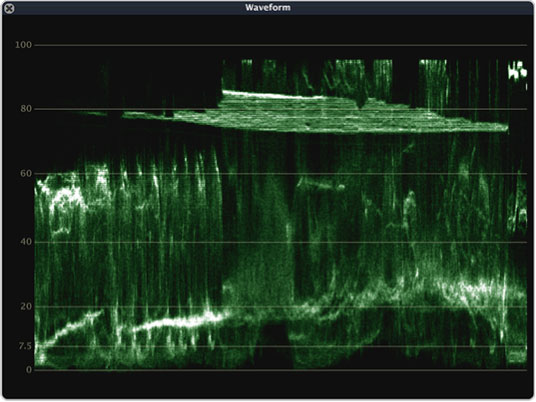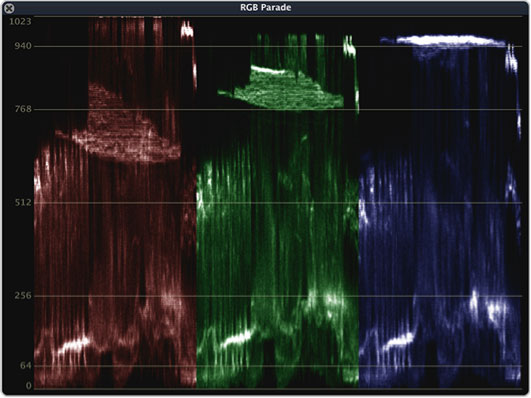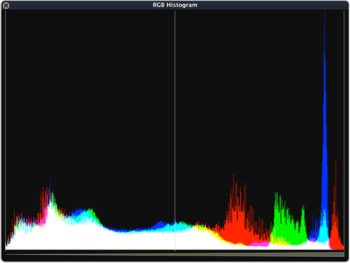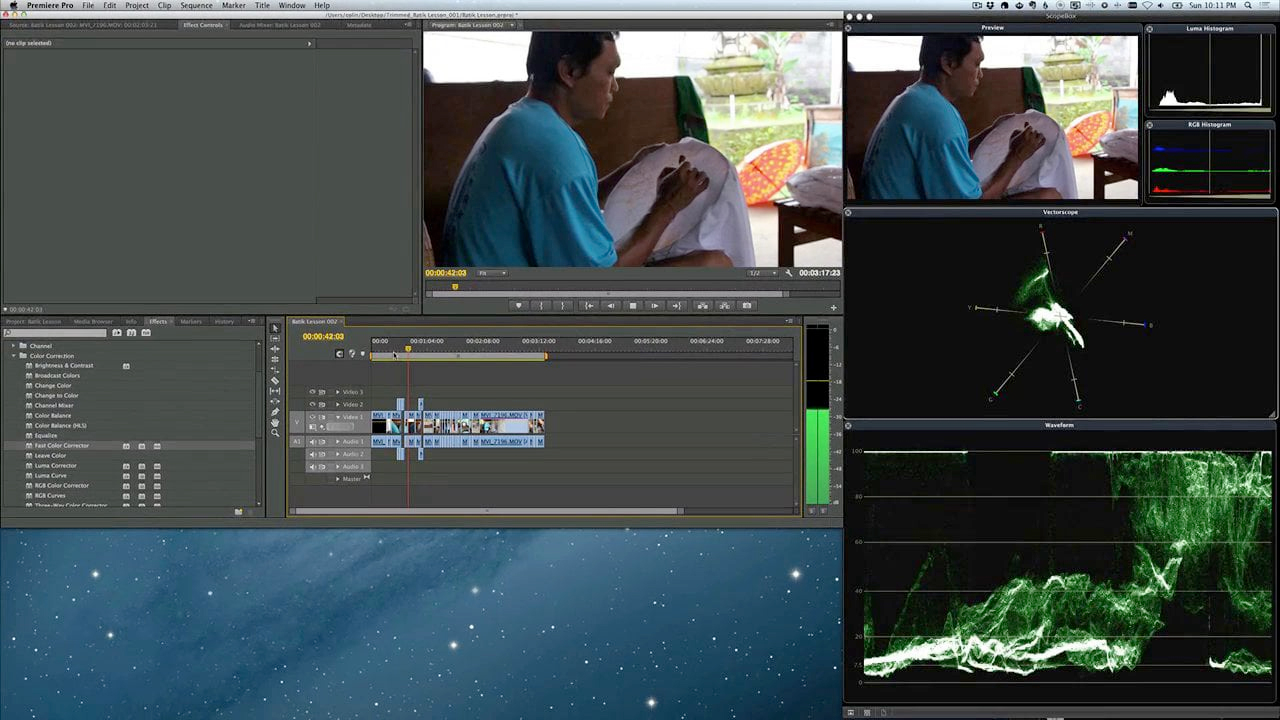4.1.x divergent media ScopeBox Pro (Perpetual)
EDIT in Admin Edit in WP
Downloads
Download demos and trial versions, product documentation, free presets and more.
You may download a free Demo after logging in.

Software Scopes for DIT, Production, Editing and Finishing
Scopebox Pro has a full set of video analysis features such as waveform, vectorscopes, RGB histogram, channel plot and video preview monitor.
Scopebox Pro – Perpetual License Highlights
- Receive free updates and support for life.
- Extended phone and email support.
- Prioritized feature requests.
Scopes
All the scopes you’d expect from hardware, and many many more. A custom toolset crafted for creative professionals – colorists, editors, and shooters. You can mix and match scopes, save layouts, and be confident that you’re seeing every pixel and every frame of your signal.

Monitoring
ScopeBox gives you a high quality, flexible preview monitor. You get all the features you’d expect to find on a high-end field monitor. With false color and feature insights, you get the most powerful toolset available for quanitative viewing. Add framing guides and overlays to make sure that your shot works out exactly the way you expect.

ScopeLink
ScopeLink allows you to feed video directly from many popular applications directly to ScopeBox. Whether you’re working in editing and compositing applications like Premiere Pro, Final Cut Pro X, or After Effects; DIT tools like Prelude, Silverstack, or LiveGrade; or color grading software like Resolve; you can use the same professional scopes.
New in ScopeBox 4!
Tons of new features, including…
- Cleaner UI – A modern interface for a more civilized age.
- TimeTrace Palettes – See changes in luminance, color and contrast over time.
- HDR and Wide Color – Updated graticles for st2084; P3, rec2020, anc rec2100 color science.
- CIE Palette – Confirm gamut ranges for multiple primaries.
- Better Movie Support – Monitor mov, mp4, MXF, BRAW, AVCHD and HDV.
- Feature Insights – Quickly find any trace region in another palette.
- Still Store – Save image stills for comparison and overlay.
- Palette Overlays – See two traces superimposed for super fast matching and comparison.
- User Target Colors – Set targets anywhere by simply choosing a color.
- False Color Previews – Preview overlays for quick exposure adjustment.
- New Device Support – Support for UVC devices like the AJA U-Tap, Epiphan, and more.
Feature Highlights
Use your exisiting hardware
Turn your older Mac Mini into a dedicated scope system, or take your scopes on the go with a Macbook, Macbook Air, or Macbook Pro.
SD, HD, 2K, 4K
From SD to 4K, if you can feed the signal into your Mac, ScopeBox will monitor it.
8bit, 10bit, YCbCr, RGB
Scopes can be used far more accurately when they work in the same format as the rest of your production pipeline.
Customizable
With the ability to save layouts and source settings, you can easily create a “turnkey” scope station, which launches directly into your preferred configuration.
Portable
When combined with an inexpensive Thunderbolt, or USB capture device, ScopeBox turns your Mac laptop into the ultimate portable quality analysis solution.
Affordable
Hardware scopes cost tens of thousands of dollars. By leveraging the power of the computer you already own, we’re able to sell ScopeBox for much less.
Description
Complete Scope List
 Waveform
Waveform
Video levels are the key to a well exposed shot. Using a waveform allows you to be confident you’re getting the most contrast and definition from the shot. It also makes setting up green screen shots a breeze. ScopeBox is an exact replica of a real waveform. You see an accurate representation of the luminance of every pixel in your video.

Vectorscope
We all want bright vibrant colors, but unfortunately there can be too much of a good thing. A Vectorscope shows you exactly how saturated your colors are, so you’ll be sure to have the brightest colors possible, without exceeding broadcast limits. Additionally, you can use the vectorscope to ensure perfect white and black balance, or to ensure the calibration of your video equipment.

RGB Parade
The RGB Parade lets you see how each channel of your video is represented in red, green, and blue. Use the RGB Parade in conjunction with the waveform, to track down overexposed parts of your shot, and then tweak them just the right amount.

RGB Histogram
You’ve probably heard people go on and on about the contrast of a scene. Sometimes it can be hard to see what they’re talking about. With the histogram, it’s easy! You can see where your colors are concentrated within a scene – are all your reds really dark, while your greens are very bright? Do you have a nice even range of saturation, or is everything concentrated in a big lump? The histogram reveals all!
 YCbCr Parade
YCbCr Parade
YCbCr Parade lets you see how each component of your YCbCr video is represented.

Luma Histogram
The Luma Histogram gives you a quick idea of the distribution of luma levels within your signal, so you quickly identify overexposed signals.
 CIE Plot
CIE Plot
Modern workflows sometimes target multiple color gamuts or smaller gamuts within a universal file. Some projects deliver P3 ranges in rec2020 gamut for instance. CIE plot shows your color gamut and the primary boundaries of multiple colorspaces. You can even enter custom primaries and whitepoints.
 Luma TimeTrace
Luma TimeTrace
One problem all colorists experience is color costancy or chromatic adaptation. As you watch a scene, your visual system is adapting to compensate for changes in perceived white point and illuminance levels. This means small changes in the image over time cannot be accurately judged. Luma TimeTrace objectively shows changes in luminance over time, allowing you to quickly spot a number of common image problems.
 RGB TimeTrace
RGB TimeTrace
Similar to Luma TimeTrace, but RGB TimeTrace shows changes to RGB balance and contrast over time.
 Channel Plot
Channel Plot
Channel Plot lets you plot two components of your signal against each other. This lets you quickly identify gamut excursions and other color conversion issues.

HML Balance
The innovative HML Balance palette segments your signal into high, mid, and low exposure vectorscopes. Using the HML Balance palette, you can easily see a color cast in a highlight or a shadow.
 Preview
Preview
The Preview palette is much more than just a simple monitor. You can overlay other images, add masking, or tweak the contrast and saturation. You can even open multiple preview palettes simultaneously – use one for checking critical focus, while another gives you a complete view of your image.
 Audio Meters
Audio Meters
Nobody likes crunchy audio. Unfortunately, many cameras these days don’t give you nearly enough information about the level of your audio – some won’t display that information at all! With the Audio Meter, you can be sure that your audio isn’t too loud or too quiet, with realtime display of the level that’s being recorded. Even better, your audio operator can watch the levels that the camera is receiving, without having to bump heads with the camera operator. Peace at last!
 Surround Meters
Surround Meters
Many workflows depend on 5.1 or 7.1 audio mixing, with a variety of channel layouts. The flexible surround meters palette gives you an easy view of the layout of your surround audio signal.
 Timecode
Timecode
There are a variety of ways to feed a timecode signal into ScopeBox – a serial cable, a firewire interface, or on supported devices, via embedded HD-SDI timecode. The timecode palette gives you a large timecode clock so you can easily keep track of time for logging purposes.
 Monitoring
Monitoring
ScopeBox’s video preview shows you every pixel of your image, exactly as you’re shooting it. The monitor calibration ensures that the colors you see accurately represent your video as well.
 Overlays
Overlays
To help you frame your shot, ScopeBox includes a number of overlay features. Center marks, rule of thirds, letterbox masks, title safe and graphics safe are all available. In addition, you can overlay any QuickTime movie or image – great for framing greenscreen shots or shooting around lower 3rds and other graphics package elements. And new in ScopeBox 4, we’ve added false color overlays to help expose shots.
 Feature Insights
Feature Insights
Like false color overlays on steriods, feature insights allow you to highlight the pixels in your image based on a specific luminance, chrominance, or channel range. It makes matching problem areas in your scopes back to image features dead simple.
 LUTs
LUTs
Most post-production workflows involve substantial color correction and image adjustment before a project is finished. For example, many productions shoot in a “log” mode which maximizes dynamic range detail – this video must be color corrected or it’ll look washed out and low-contrast. The LUT support in ScopeBox allows you to quickly apply a transformation to your video signal, so you can get a sense of how your color corrected footage will look. Many cameras even include sample LUTs for doing log-to-linear conversion.
ScopeLink: Professional Scopes for your Existing Applications
 ScopeLink allows you to feed video directly from many popular applications directly to ScopeBox. Whether you’re working in DIT tools like Pomfort Silverstack or LiveGrade, Davinci Resolve, Apple Final Cut Pro X, or Adobe Creative Cloud applications like Premiere Pro or After Effects, you can use the same professional scopes.
ScopeLink allows you to feed video directly from many popular applications directly to ScopeBox. Whether you’re working in DIT tools like Pomfort Silverstack or LiveGrade, Davinci Resolve, Apple Final Cut Pro X, or Adobe Creative Cloud applications like Premiere Pro or After Effects, you can use the same professional scopes.
 Real-time Monitoring
Real-time Monitoring
ScopeLink gets every frame of video that your NLE or compositing application outputs, in realtime. With ScopeLink, you can have dedicated, fulltime scopes without external hardware.
 Professional Quality
Professional Quality
The scopes found in most desktop editing applications leave a lot to be desired – they’re not accurate, they’re slow, and they’re not configurable. ScopeBox provides industry leading quality, configurability and performance. With ScopeLink connecting your editing, grading, or compositing application to ScopeBox, you don’t have to be constrained by the built in scopes ever again.
 Free!
Free!
ScopeLink isn’t an “add-on” or a special license key. It’s included with every copy of ScopeBox.
System Requirements
Scopebox (4.1) supports Apple Silicon M1
- universal m1 support for ScopeBox and all ScopeLink plugins
ScopeBox requires a Mac running macOS 10.12 Sierra or newer and support for Metal.
You can find a list of supported hardware here. We’ve put together some tips on getting a signal into your laptop or your desktop, but if you’re just testing, you can use ScopeBox’s test pattern source or your Mac’s built-in camera. There is an extensive user manual available from the ScopeBox help menu and online.
- Intel-base Macintosh
- Graphics card with support for Metal.
- 8 GB of RAM.
- 120 MB of disk space.
- Mac OS X 10.12.5 or later.
These minimum requirements are not a guarantee ScopeBox will work with your exact configuration. Please thoroughly test your hardware with the trial version before making any decisions.
Below you will find links to our online manual to help with setup and configuration. Please click on the appropriate link for your software.
Adobe After Effects:
http://www.divergentmedia.com/support/documentation/scopebox/view-adobe-after-effects
Adobe SpeedGrade:
http://www.divergentmedia.com/support/documentation/scopebox/view-adobe-speedgrade
Adobe Premiere Pro & Prelude:
http://www.divergentmedia.com/support/documentation/scopebox/view-adobe-premiere-and-prelude
Final Cut Pro X:
http://www.divergentmedia.com/support/documentation/scopebox/view-final-cut-pro-x
Change Log
What’s new in Scopebox 4.1.1
- NDI source updated to v5
- Fixed bug which blocked AJA devices from being discoverable
- Adds HDMI audio support for AJA devices
- Fixed crash saving stills on corrupt source
- Adds tooltip to image galleries to show path to file on disk
- Now saves alert settings between launches
- Fixed crash using alerts on RGB sources
- Adds color label to alerts (reflected in alert list and timeline)
- Added option to scroll timeline with playhead
- Adds ability to scroll timeline by when dragging playhead to edge
- Fixed bug which caused some movies to render the first audio track in all waveforms
- Speed up timeline generation
- Allows custom thresholds for Loudness alerts
- Timeline shortcuts activated more consistently
- JKL playback controls always active with movie source
- Fixed bug recalling full screen layouts on secondary monitors
What’s new in Scopebox 4.1
- Apple silicon support – universal m1 support for ScopeBox and all ScopeLink plugins
- Beta Alert support – adds timecoded alerts for live sources (luma, chroma, and gamut excursions; video slug detection; audio peak and r128 loudness)
- Beta Timeline support – new timeline view shows timetraces and alerts for intuitive file based QC
- Layouts can now save and recall source settings (thanks Ronald!)
- Layouts now save and recall palette overlays
- Added pref for saving stills as png, jpg, or tiff (thanks James!)
- Still store captures now round trip with correct color when saved as tiff (they clip super whites/blacks in png or jpg) (thanks Ulrich!)
- ATEM usb source correctly shows
- Adds color targets to cie plot and xyy channel plots
- Color targets are now preserved between launches
- Fixes possible echo on movie playback preview audio (thanks Edward!)
- Fixes corrupt frames in macbook 16” (MacBookPro16,1) with 8bit YCbCr formats
- Fixes brief hang when selecting view or source menu for first time each launch
- Fixes rare crash when altering settings on CMIO based sources
- Improves performance of HML palette
- Improves support for Premiere Pro v15 in ScopeLink (thanks Jesenko!)
- Improves Resolve ScopeLink support to properly handle out of gamut RGB values (thanks Rikk!)
- Various performance & stability improvements
What’s new in Scopebox 4.1b (Beta)
- Support for Apple Silicon M1
ScopeBox 4.1b2 known issues:
- no NDI input support
- no AJA iput support
- ScopeLink output only works in 3rd party hosts running in Rosetta 2
You can download ScopeBox Beta here:
https://www.divergentmedia.com/filedownload/ScopeBox 4.1b
ScopeBox 4.0.3
December 10, 2019
We’ve shipped a new update to Scopebox 4, with improved colorspace conversions, graticule improvements, and better AJA device support. Users can update via in-app auto-update, or by downloading a copy from our trial page.
Changes in ScopeBox 4.0.3:
- Adds back RGB transfer function support on RGB Parades, Histograms, and TimeTrace
- Fixes rendering of CIE plots
- Fixes popup button rendering on macOS Catalina
- Adds black and white lines to 8bit and 10bit grats
- Matrix, Transform and Transfer function overrides saved with source
- Fixes errors saving source with empty source name
- Adds digital 7:3 mV grat in addition to NTSC 10:4 grats
- Fixes drawing artifacts when moving Scopebox window from retina to non-retina screen
- Whitelists Adobe CC 2020 hosts for scopelink
- AJA devices can now be properly saved as sources
- AJA devices support codec selection
- Fixes bug with multiple trial badges showing on toolbar
- Many bug fixes and improved stability
What’s new in ScopeBox 4
ScopeBox 4 is an all-new application, building upon a decade of ScopeBox innovation. A brand new processing engine allows for higher performance, utilization of the latest Mac hardware, and support for a huge variety of capture hardware.
CIE Plot Palette
With HDR-WCG (High Dynamic Range – Wide Color Gamut), Rec 2020, p3 and more, the world of colorspaces has gotten incredible complex. The CIE Plot allows you to visualize gamut across multiple sets of primaries.
Luma and RGB TimeTrace Plot
Traditional scopes only show you what’s happening right now. The Luma and RGB TimeTrace palettes continuously refresh, showing you your luma (or RGB) history over the last 300 frames.
False Color
One of the most highly-requested features, false color in the preview provides a visual way to identify issues, using a variety of presets. And you can leverage the ability of ScopeBox to host multiple copies of the same palette, running both a normal color and false color preview side-by-side.
ScopeLink support in Resolve
Until now, using ScopeBox with Resolve meant running ScopeBox on a separate Mac. Thanks to the addition of Resolve support in ScopeLink, you can run it all on the same Mac, without any additional hardware.
Feature Insights
Feature Insights allow you to focus your scopes on a specific section of your signal. Maybe you want to focus on one face, or a window in the background. By setting a feature insight within your preview palette, all of your scopes will highlight just that portion of the signal. Or, you can highlight a portion of your signal in a scope and find out exactly which part of your signal is responsible for that value.
HDR
Throughout the app, we’ve revamped scales and features to support modern HDR workflows and measurements.
User Targets
User targets let you set custom values that appear as targets on your scopes. This makes it easier to match specific values between shots.
New Device Support
ScopeBox now works with a wider range of devices, including popular UVC (Universal Video Class) devices like the AJA U-Tap. This support opens up a much wider set of low cost devices for use with ScopeBox
FAQs
Tutorials

Cut the Cable: Choosing the Right IP Media Protocol for Your AV Workflow
Cut the Cables, Conquer Workflows! This guide explores NDI, SMPTE 2110, and IPMX - the leading protocols for transmitting video and audio over IP networks.
More...
Directly monitor your editing or compositing application using ScopeBox
Learn how to use Scopelink to directly monitor your editing or compositing application using ScopeBox. With ScopeLink, you can have world-class scopes and QC tools, no matter which application you're working in.
More...
